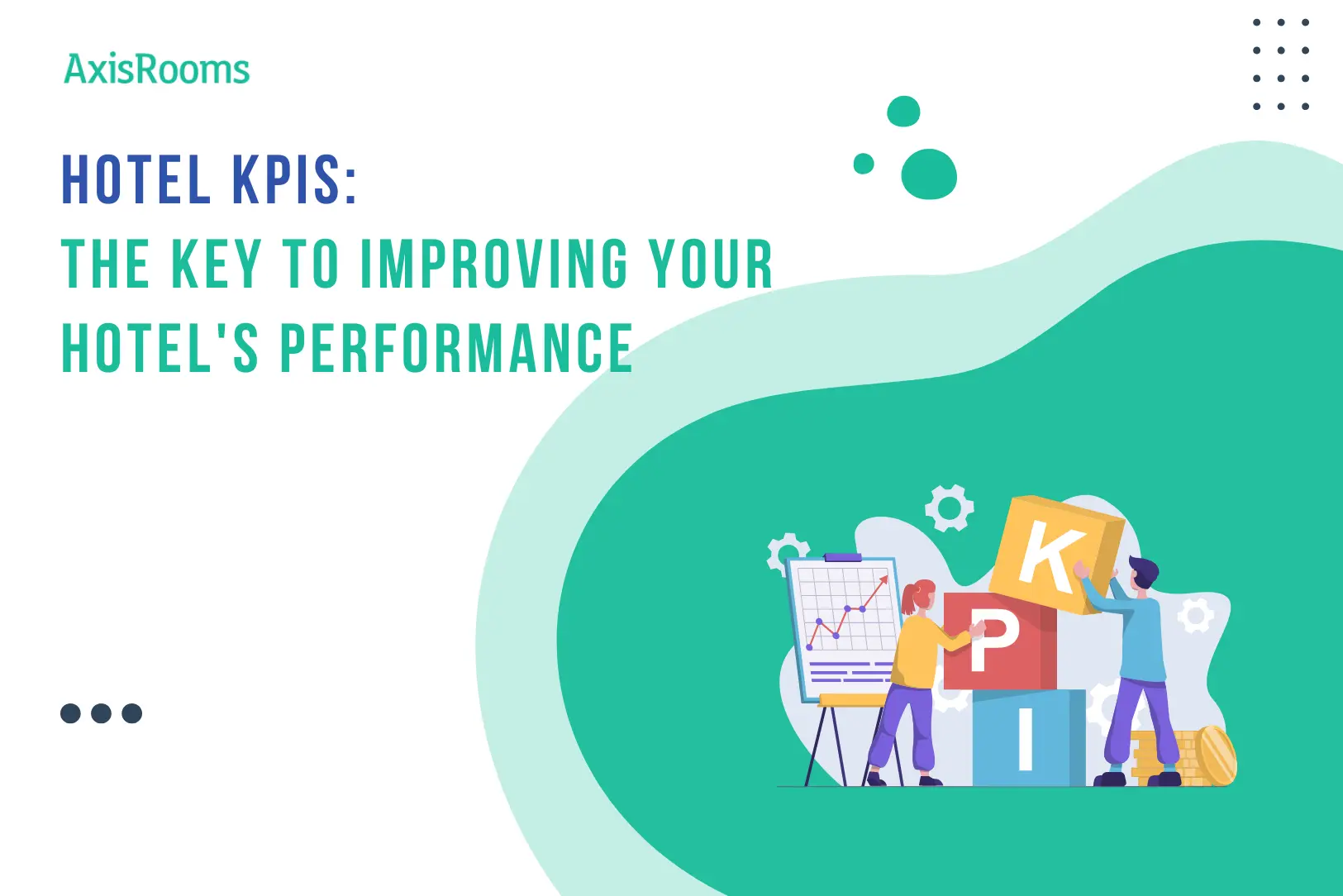Understanding how well your hotel is performing can be tricky without access to the right tools. That’s where Key Performance Indicators (KPIs) come in. KPIs are metrics that help you measure success in different areas like revenue, guest satisfaction, and efficiency. Let’s break down some of the most important KPIs for hotels, why they matter, and how you can use them to your advantage.
Average Daily Rate (ADR)
What it is: ADR tells you how much money you’re earning, on average, per occupied room.
ADR = Total Room Revenue ÷ Number of Occupied Rooms
Why it matters: ADR is an important indicator of how well you’re pricing your rooms. If it’s too low, you might be leaving money on the table. Too high, and you risk turning away potential guests. Monitoring ADR allows you to adjust your rates based on market demand, helping you strike the right balance.
Revenue per Available Room (RevPAR)
What it is: Revenue per available room measures how much revenue you are generating per available room, whether it’s occupied or not.
RevPAR = Total Room Revenue ÷ Total Available Rooms
Why it matters: Unlike ADR, RevPAR accounts for both pricing and occupancy. It help you see how efficiently you are filling your rooms while maximizing revenue. To increase your RevPAR, you might either focus on raising your occupancy rate or adjusting your room rates based on demand.
Gross Operating Profit per Available Room (GOPPAR)
What it is: GOPPAR looks at your overall profit by factoring in all your operational costs.
GOPPAR = Gross Operating Profit ÷ Total Available Rooms
Why it matters: While RevPAR is important for tracking revenue, it doesn’t show how much of that revenue is actually profit. GOPPAR fills that gap by considering expenses like salaries, utilities, and maintenance. Monitoring this KPI helps you see where you can cut costs and improve profitability.
Occupancy Rate
What it is: This KPI shows how many of your available rooms are occupied over a given time.
Occupancy Rate = (Number of Occupied Rooms ÷ Total Available Rooms) × 100
Why it matters: High occupancy is great, but it’s important to pair this with a strong ADR to ensure you’re maximizing revenue. If your occupancy is high but your ADR is low, you might be underpricing. Finding the right balance between these two KPIs is key.
Average Length of Stay (ALOS)
What it is: ALOS tells you how long, on average, guests are staying at your hotel.
ALOS = Total Room Nights ÷ Number of Bookings
Why it matters: Longer stays often mean higher revenue per guest, as they spend more time (and often money) at your hotel. By offering special packages or discounts for extended stays, you can increase ALOS, leading to more revenue without needing to attract new guests.
Customer Satisfaction Score (CSAT)
What it is: Customer satisfaction score is a metric that shows how satisfied guests are with their experience at your hotel.
CSAT = (Number of Satisfied Guests ÷ Total Survey Respondents) × 100
Why it matters: Happy guests are more likely to return and recommend your hotel to others. CSAT is directly tied to your hotel’s reputation. Tracking it helps you spot areas where your service might be falling short, allowing you to make necessary changes or enhance your services to ensure enhanced overall guest experience.
Employee Satisfaction Score (ESAT)
What it is: This KPI measures how happy and engaged your employees are.
ESAT = (Number of Satisfied Employees ÷ Total Employees) × 100
Why it matters: If your employees are happy, it means your guests will be happy too. Ensuring a positive work environment results in low turnover and training costs and better service.
Revenue per Occupied Room (RevPOR)
What it is: RevPOR tells you how much revenue each occupied room generates, including extras like dining, spa services, or room upgrades.
RevPOR = Total Revenue ÷ Number of Occupied Rooms
Why it matters: This KPI helps you see how well you’re monetizing each guest beyond just room charges. To improve RevPOR, consider offering more upsell opportunities, like better room amenities or packages that include dining and activities.
How to Use These KPIs?
Tracking these KPIs isn’t just about collecting data. You need to take action based on what you learn. For example:
- If your RevPAR is low, you might look on ways to increase occupancy or adjust your room rates.
- A low CSAT score means it’s time to rethink how you handle guest services or address common complaints.
- If GOPPAR is falling, review your operational costs to find ways to run more efficiently.
These KPIs offer valuable insights into your hotel’s overall performance and give you the tools to make improvements that can lead to increased revenue, happier guests, and better employee engagement.
Read also about Break Even Occupancy Rate
Let AxisRooms Help you meet your KPIs
AxisRooms Channel Manager significantly aids hotels in meeting their KPIs by streamlining operations and optimizing revenue management. Here’s how it helps:
Real-Time Updates: The Channel Manager automates the updating of rates and inventory across multiple Online Travel Agencies (OTAs) and platforms in real-time, ensuring that availability is always accurate. This reduces the risk of overbookings, a critical KPI for maintaining guest satisfaction and operational efficiency
Increased Occupancy and Revenue: By distributing room availability and rates across various channels, AxisRooms enables hotels to reach a broader audience, leading to increased bookings. This directly impacts occupancy rates and revenue per available room (RevPAR), essential KPIs for hotel performance
Time Efficiency: The automation provided by the Channel Manager saves hotels approximately 90% of the time spent on manual updates. This efficiency allows staff to focus on enhancing guest experiences and other strategic initiatives, contributing to improved service quality and operational KPIs
Performance Analytics: AxisRooms offers detailed reports on channel performance, helping hotels identify their best-performing sales channels. This data-driven approach allows for informed decision-making regarding marketing strategies and resource allocation, aligning with KPIs related to sales performance and distribution effectiveness
Dynamic Pricing Strategies: The system supports dynamic pricing based on market trends, seasonality, and occupancy levels. By adjusting rates accordingly, hotels can maximize revenue while maintaining competitive pricing, which is crucial for achieving financial KPIs
Enhanced Visibility: The Channel Manager improves a hotel’s visibility on OTAs by ensuring consistent rate parity and high-quality content across platforms. Increased visibility leads to more bookings, positively influencing key performance metrics like average daily rate (ADR) and overall revenue
AxisRooms Channel Manager empowers hotels to optimize their operations, enhance guest satisfaction, and ultimately meet their key performance indicators through automation, real-time data management, and strategic insights.
By tracking key metrics, you can take control of your hotel's performance and make smarter decisions that lead to revenue growth. Regular monitoring will also pinpoint the areas for improvement, ensuring that your hotel stays competitive in the market.


